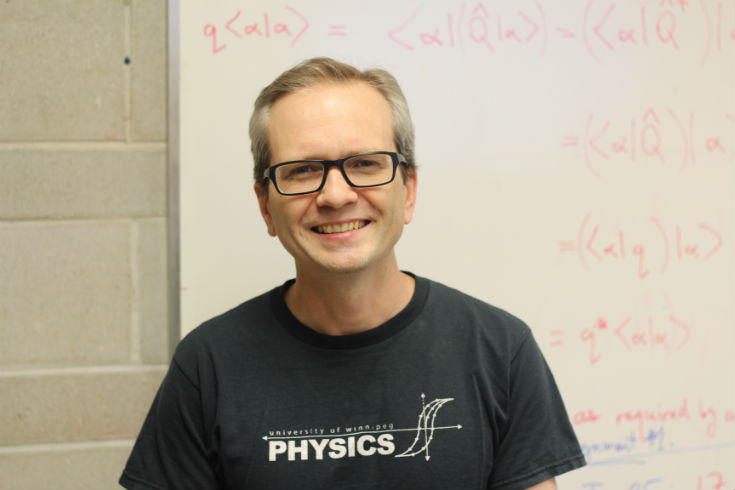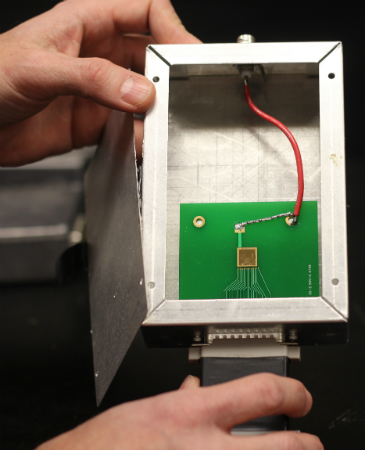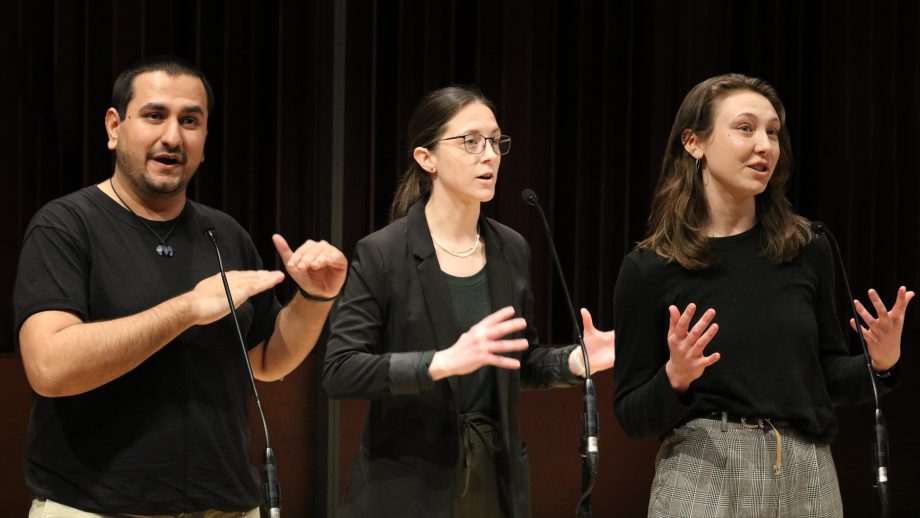Diamonds are beautiful examples of perfect crystals. Made of carbon, diamonds are excellent semiconductors, and because of their high tolerance for heat, they might be the future for computers as silicon microchips become obsolete. It turns out diamonds are also extremely resistant to radiation, and this makes them attractive candidates as detectors of ionizing radiation, with the potential to replace silicon. Today, synthetic diamonds that rival the size of the silicon wafers used to make microchips can be grown in the lab.
Using these ideas, and a few techniques borrowed from physics experiments at the Large Hadron Collider in Geneva, UWinnipeg physicist Dr. Jeffery Martin and his collaborators developed a new radiation detector based on synthetically grown diamond.
“Learning to coat diamonds with metal, and shooting lasers at electron beams is fun. But the real reward is to have the chance to discover something new,” says Martin.
The new detector was recently used in an experiment at Jefferson Lab in Newport News, VA, searching for new particles. The promising results were published in the prestigious Physical Review X, an American journal that publishes key papers that significantly advance the state-of-the-art in physics.
“The use of diamond allowed us to measure to the best precision ever achieved in this kind of an experiment,” says Martin.
Martin’s detector was used to sense high-energy electrons which scattered off laser light. This allowed the experiment to sample the electron beam polarization. The new technique reduced a potentially devastating uncertainty to below 1%.
“We successfully demonstrated a new application using diamond as a semiconductor, which is a key step toward making diamond-based computer chips a reality,” says Martin.
Martin and collaborators from UWinnipeg, the University of Manitoba, institutions in the United States, and elsewhere are planning to use the same technology to conduct an even more ambitious search for new particles in the future.
All Images Courtesy of the University of Winnipeg, Naniece Ibrahim






